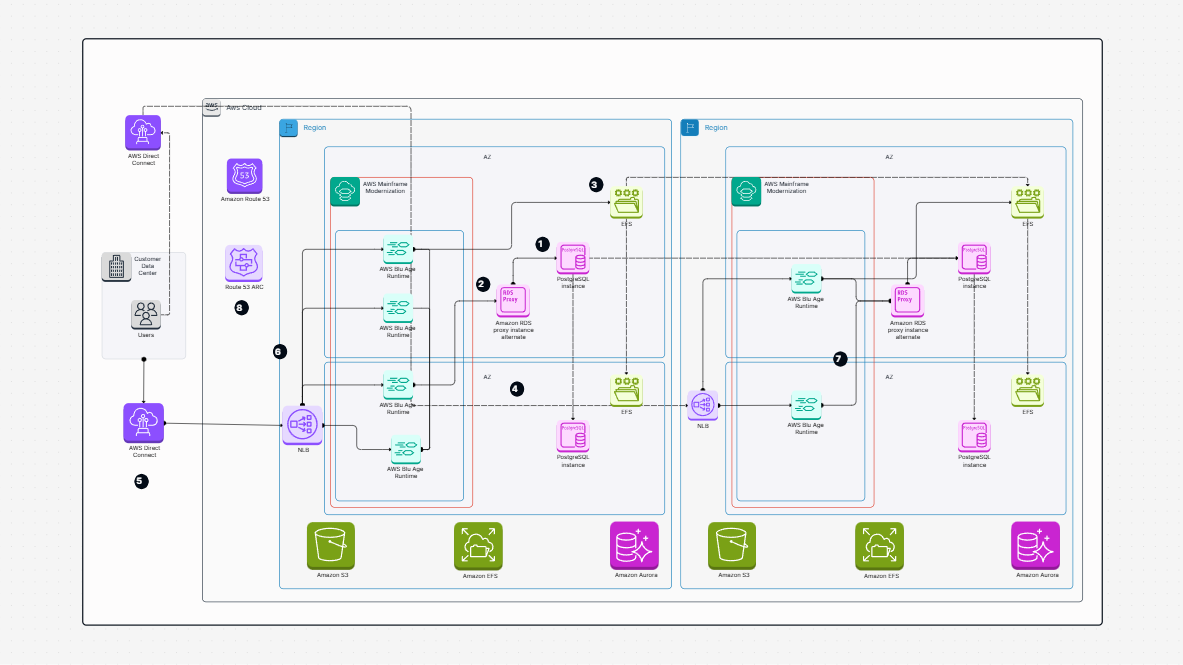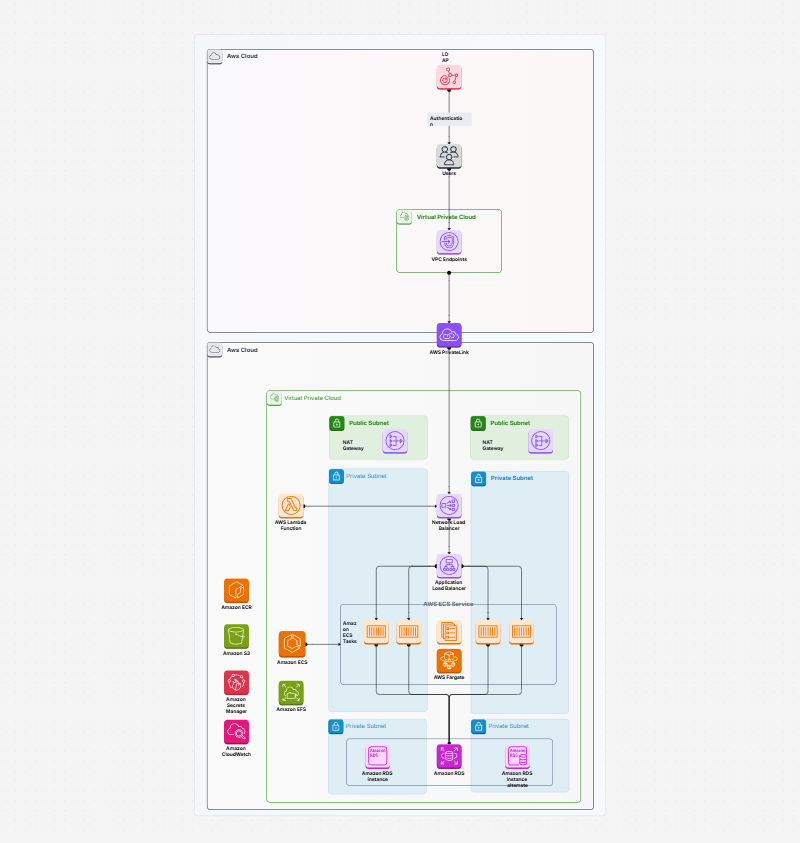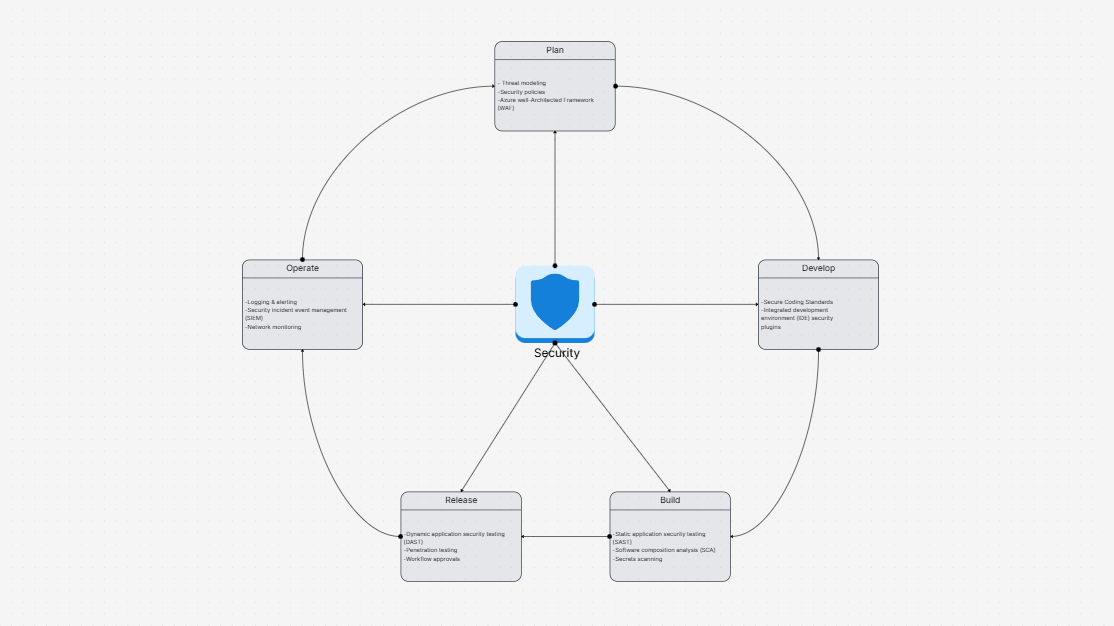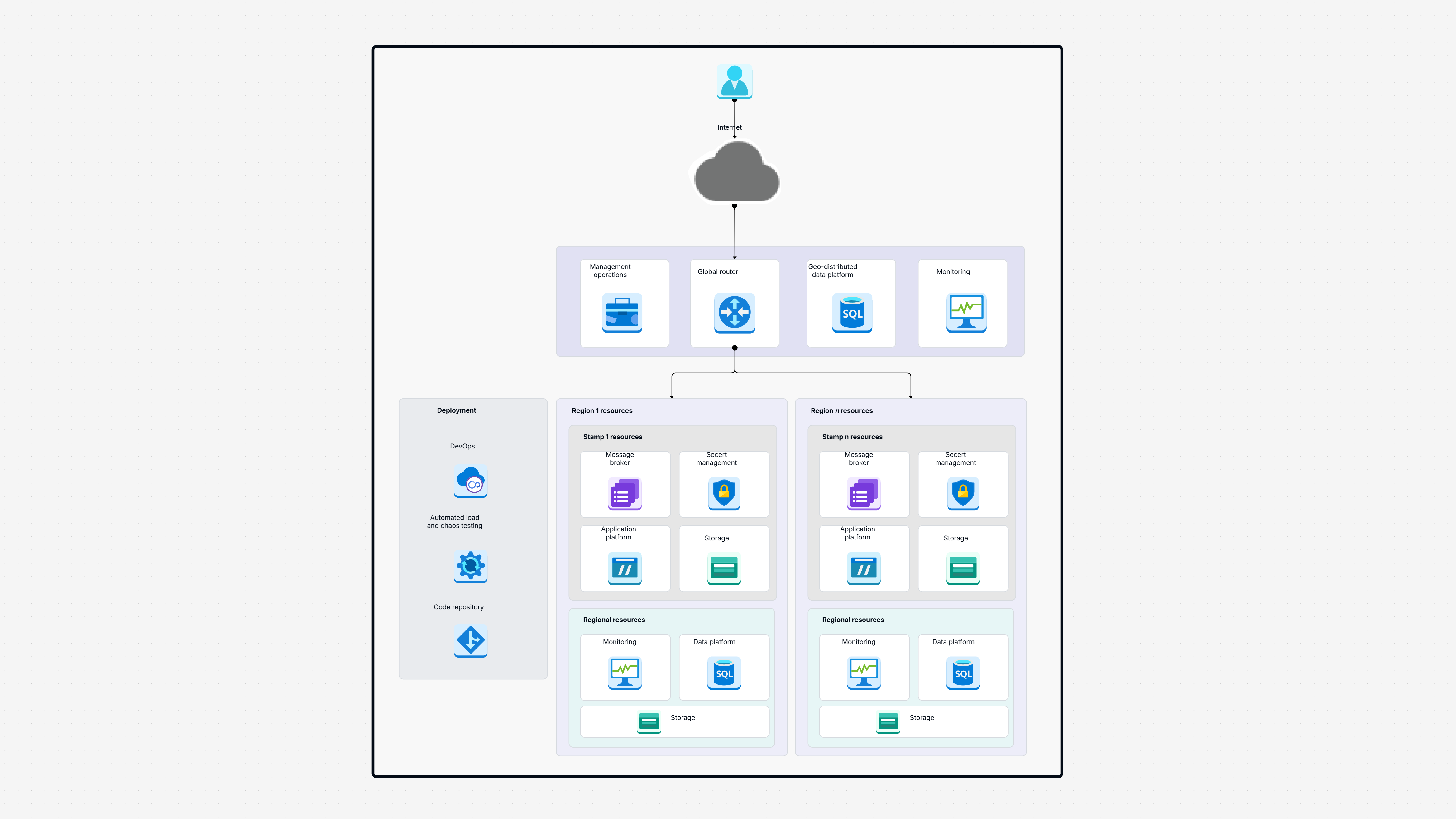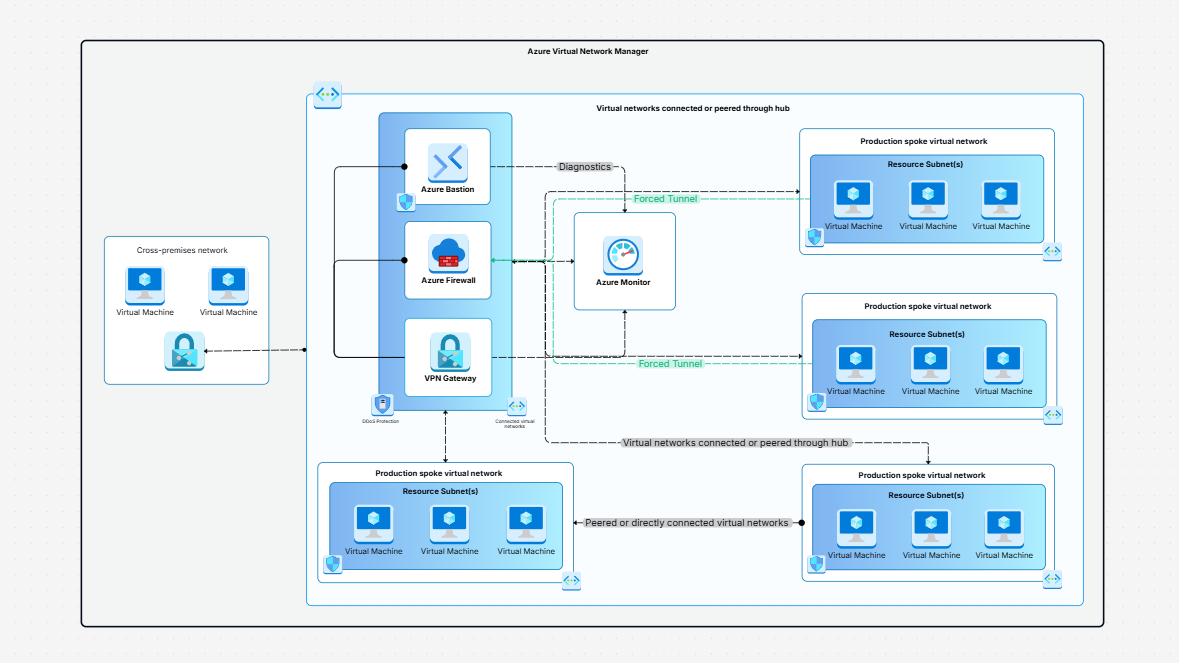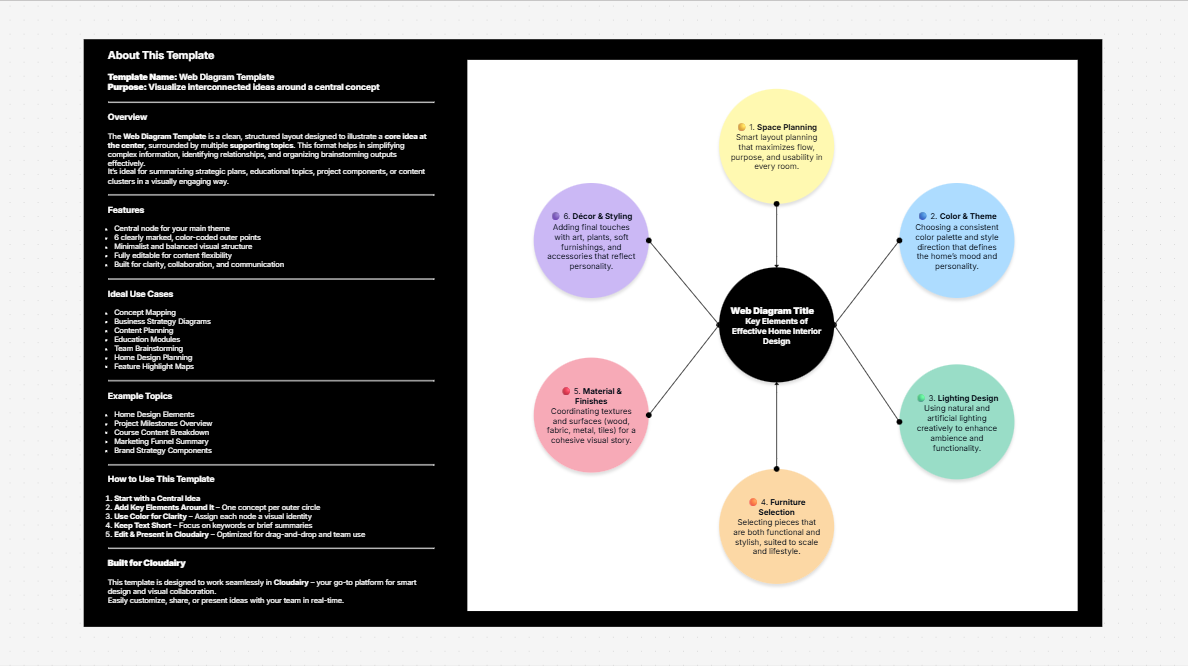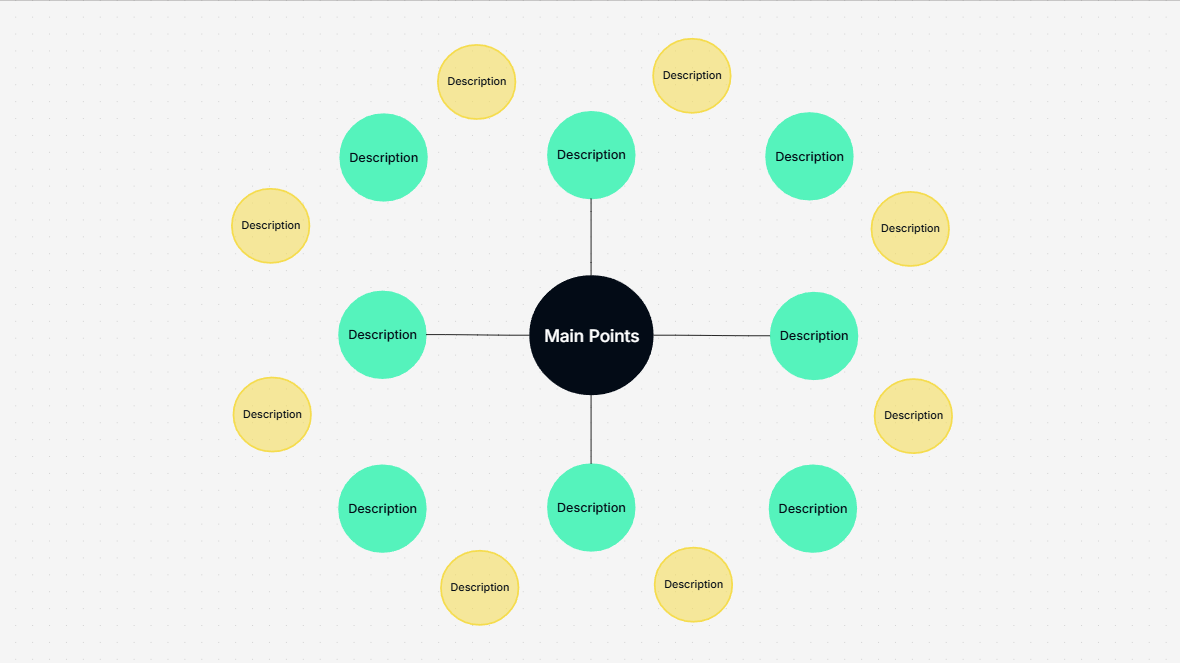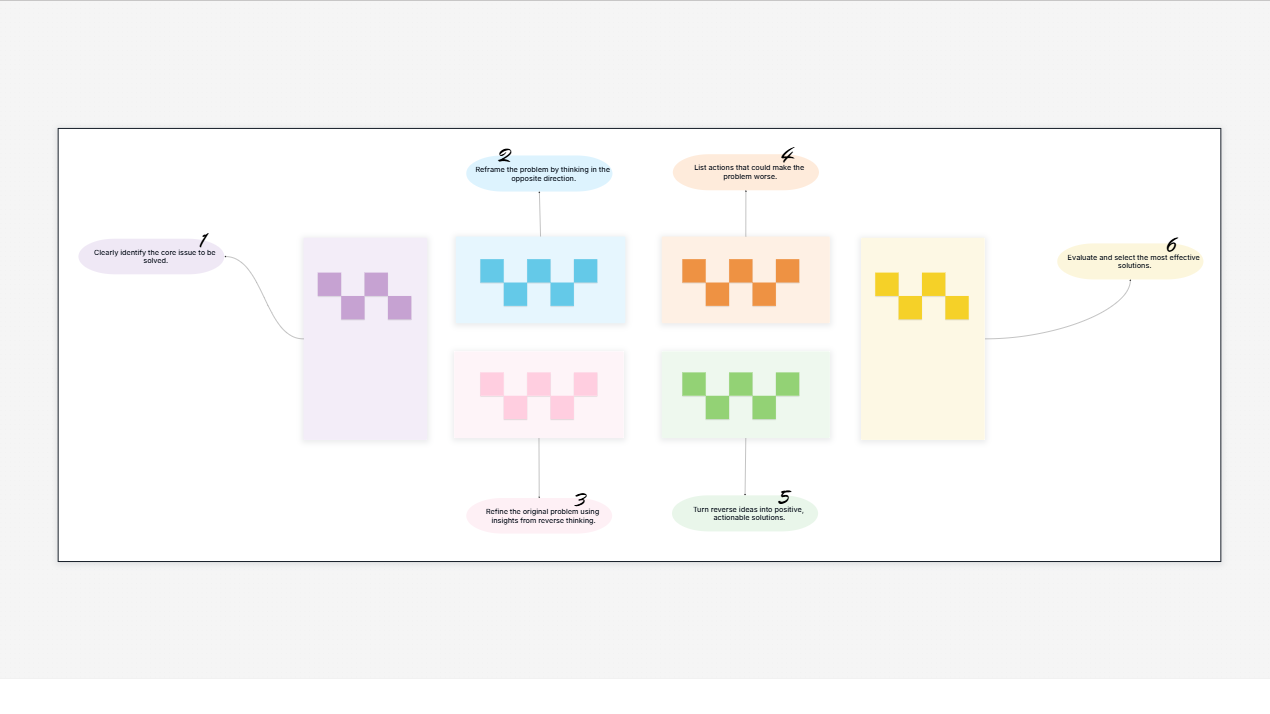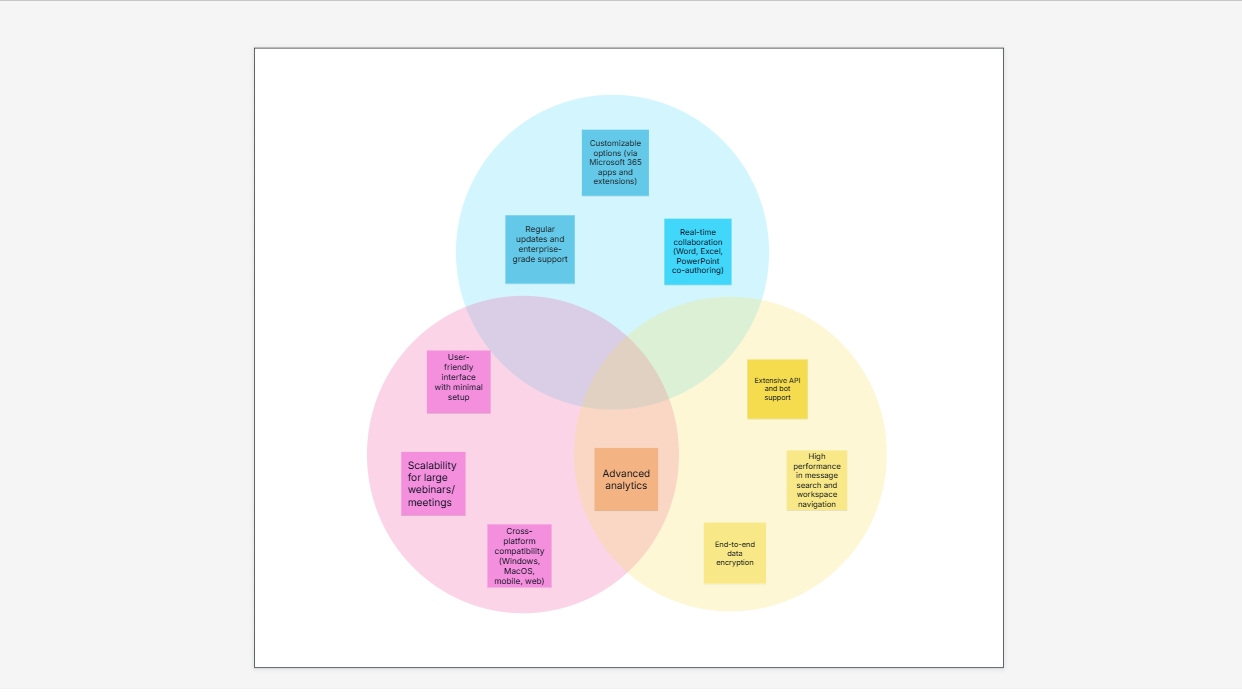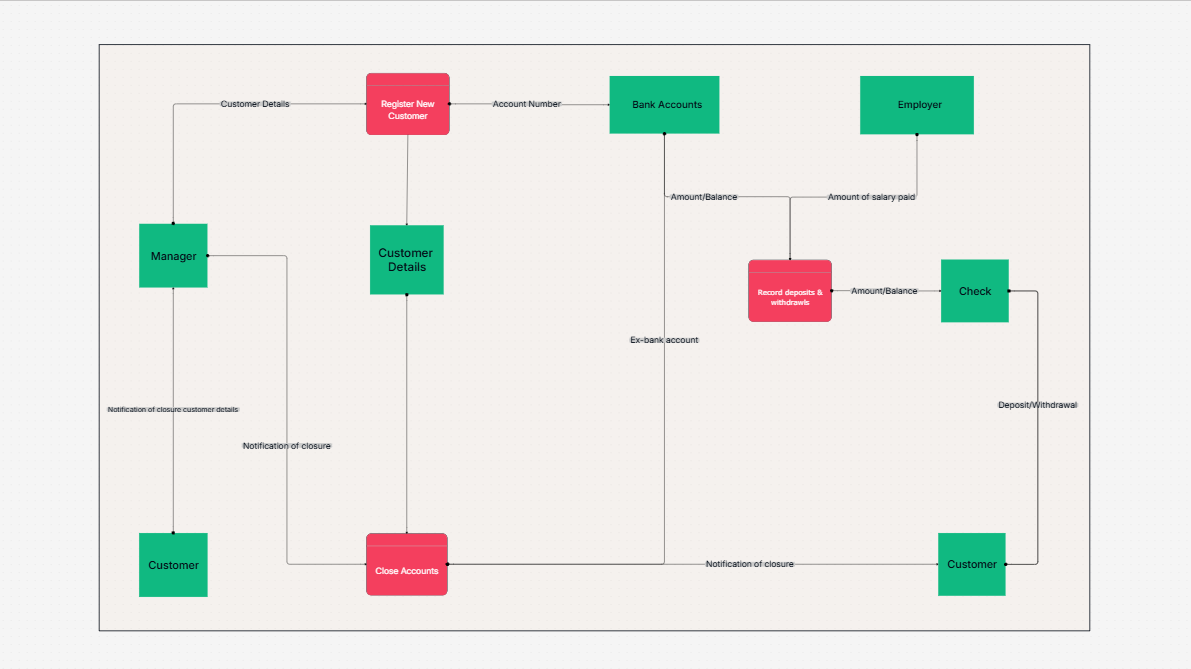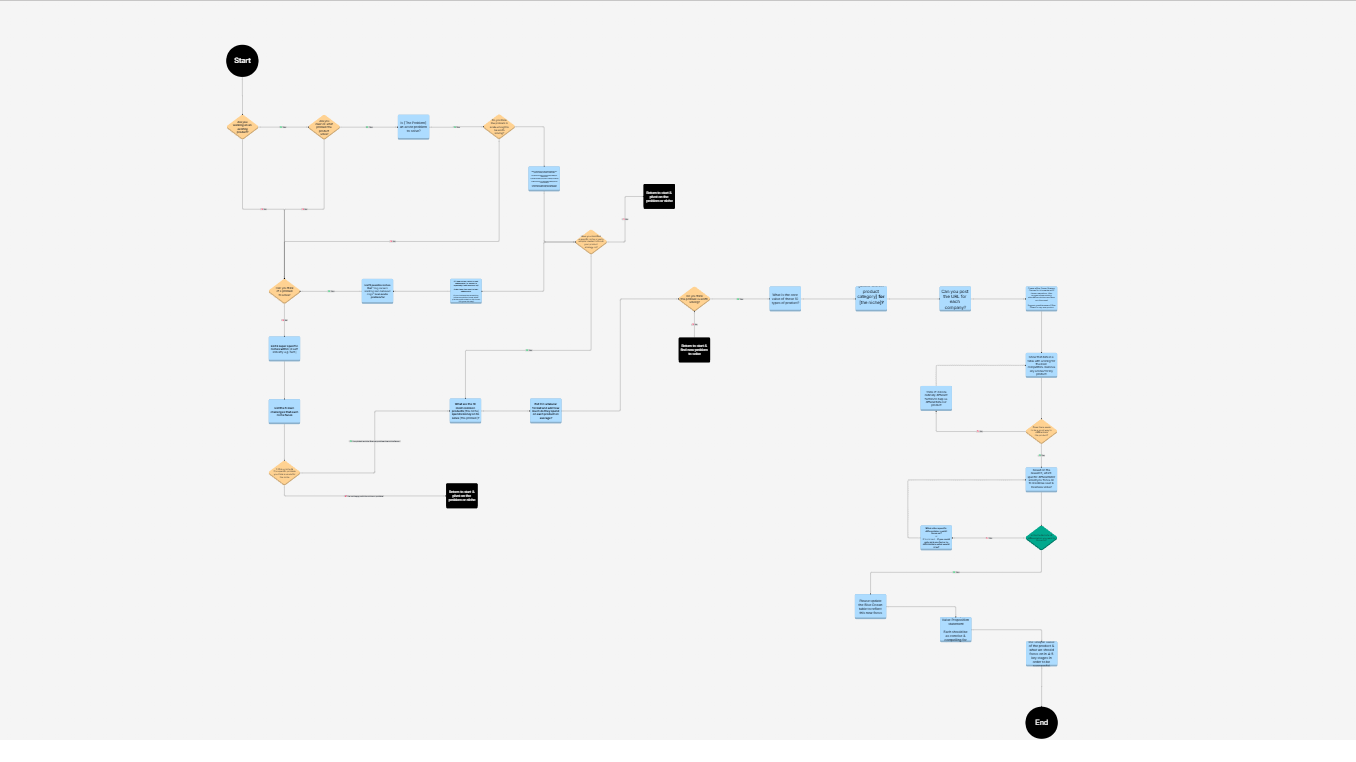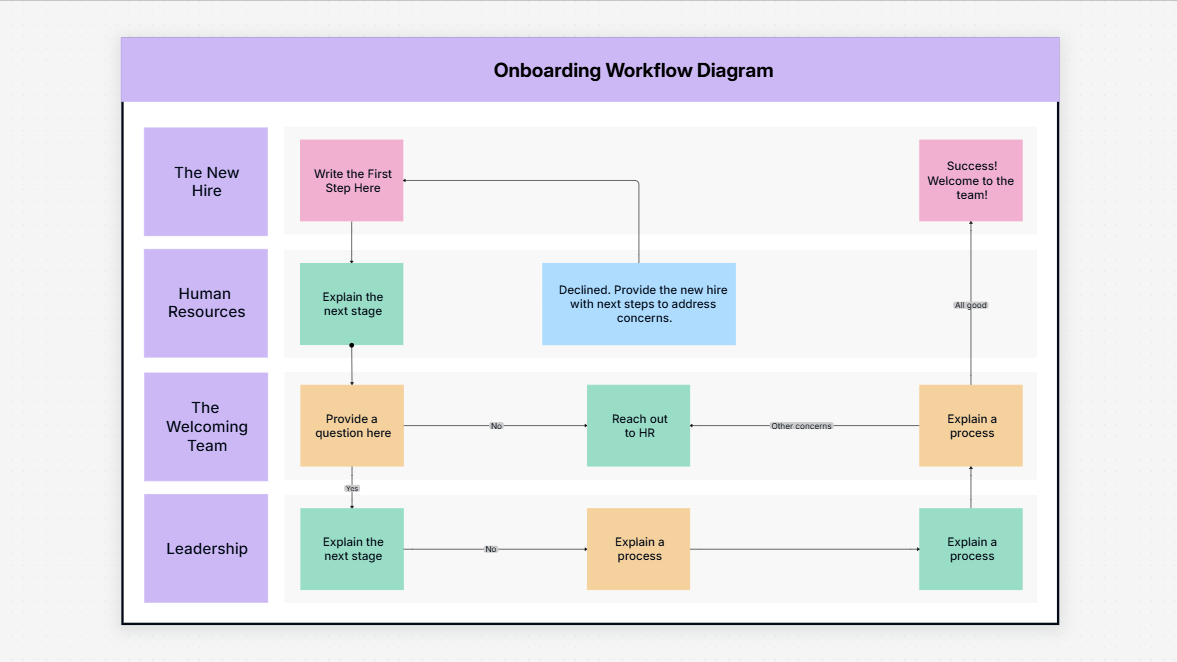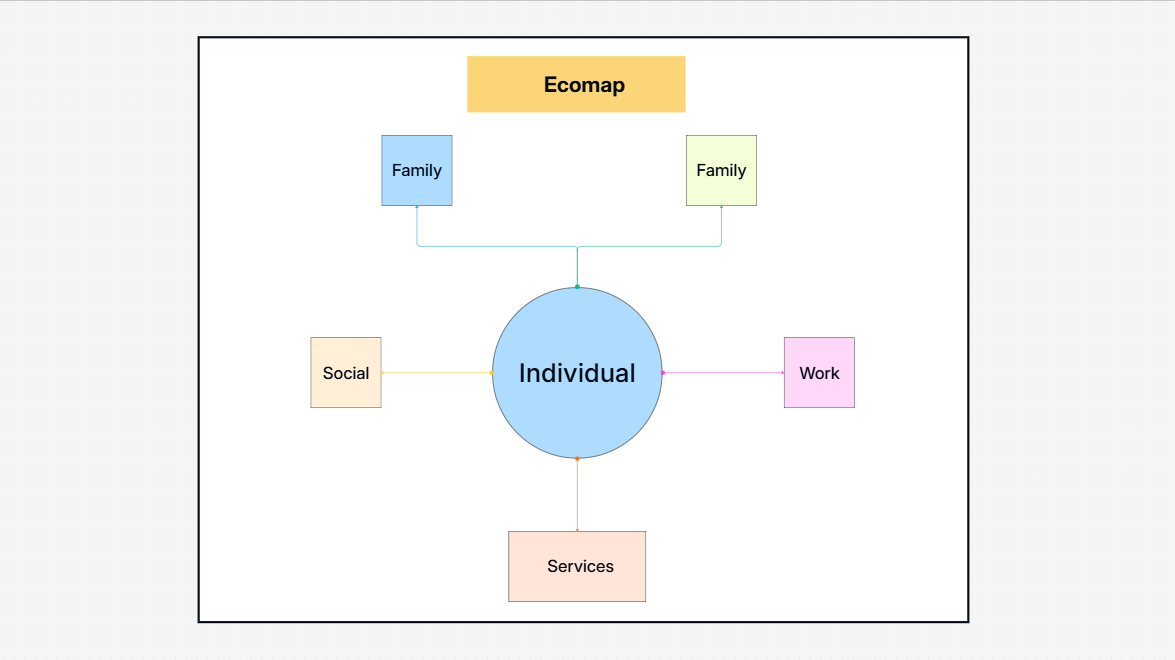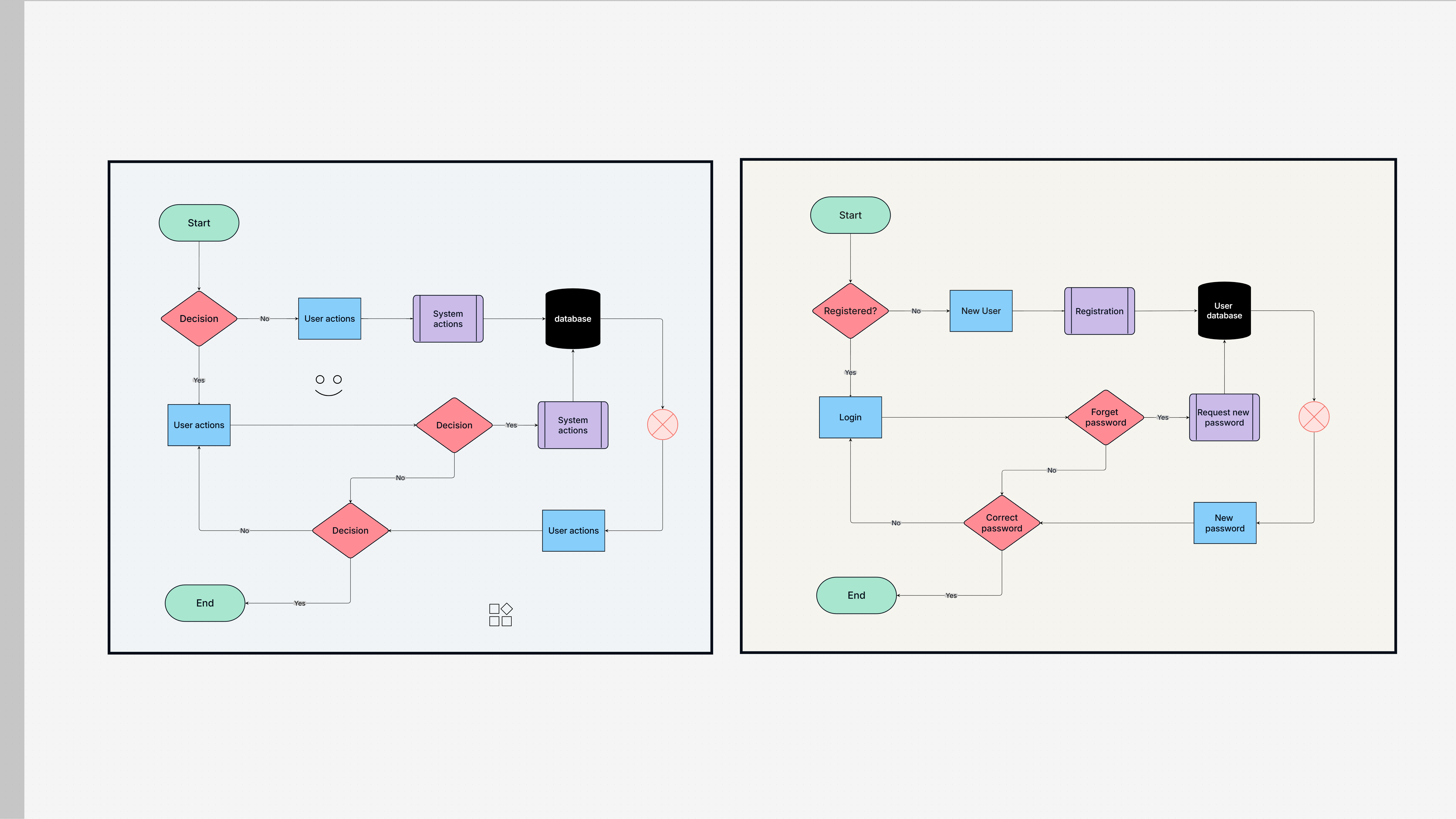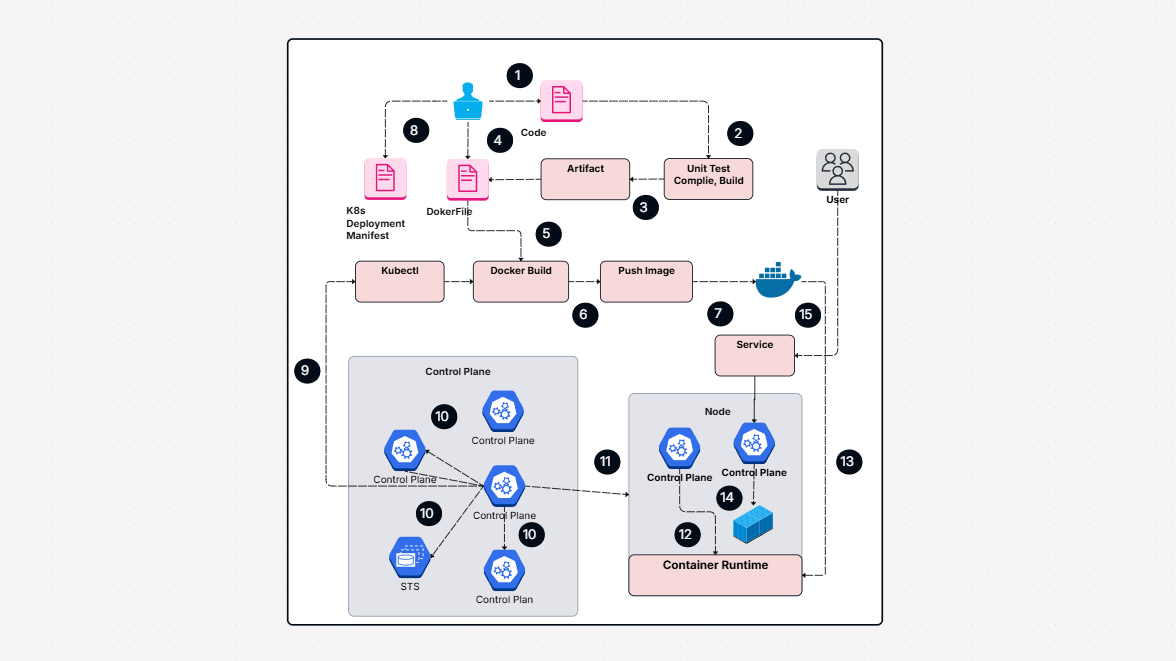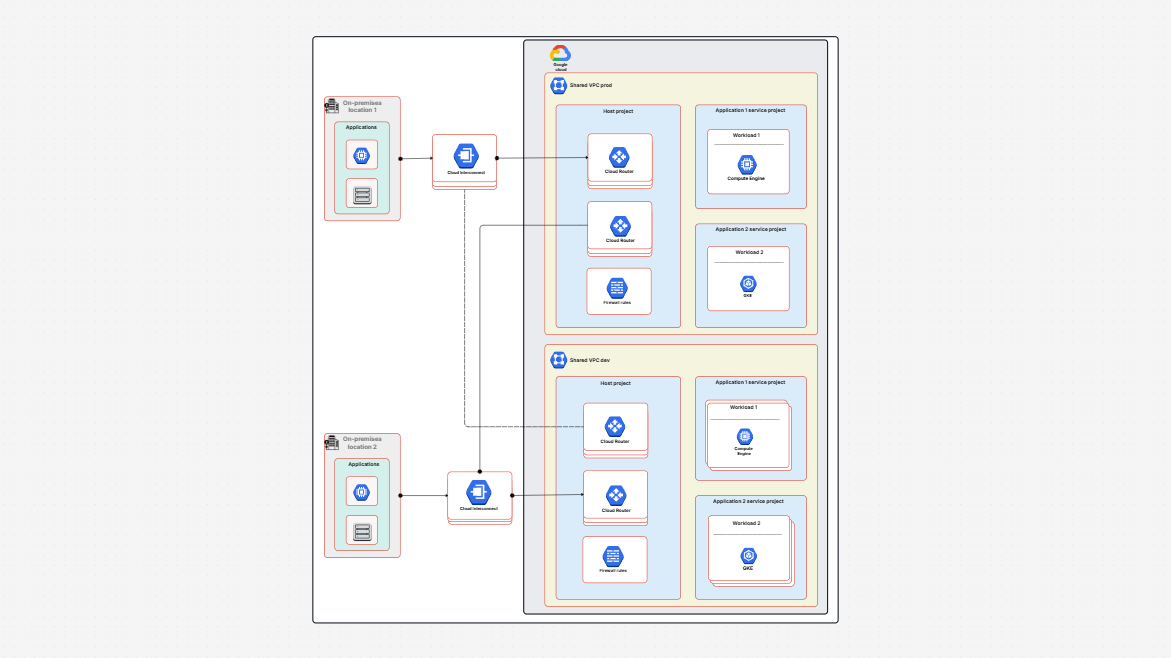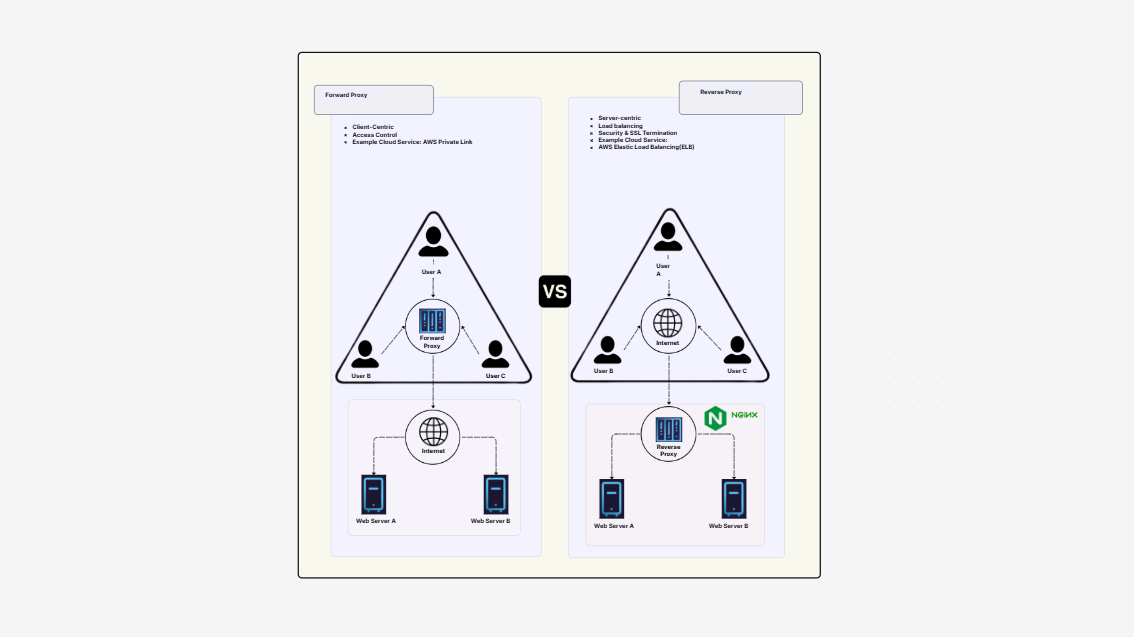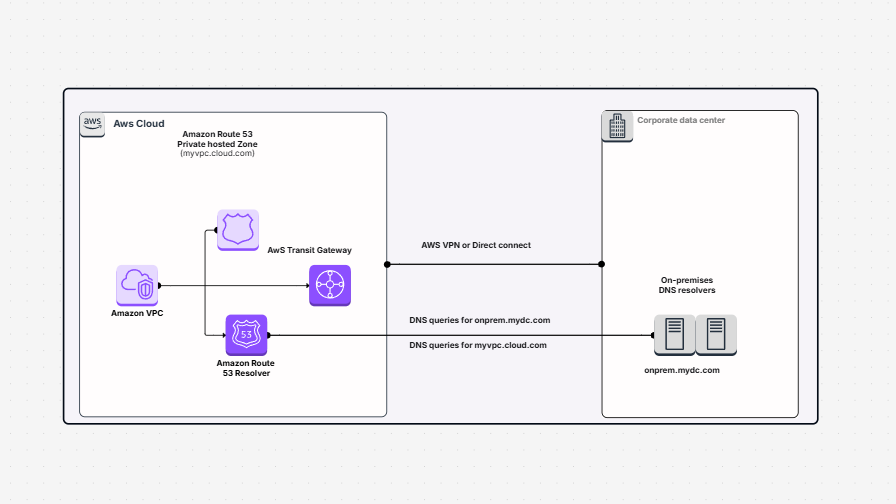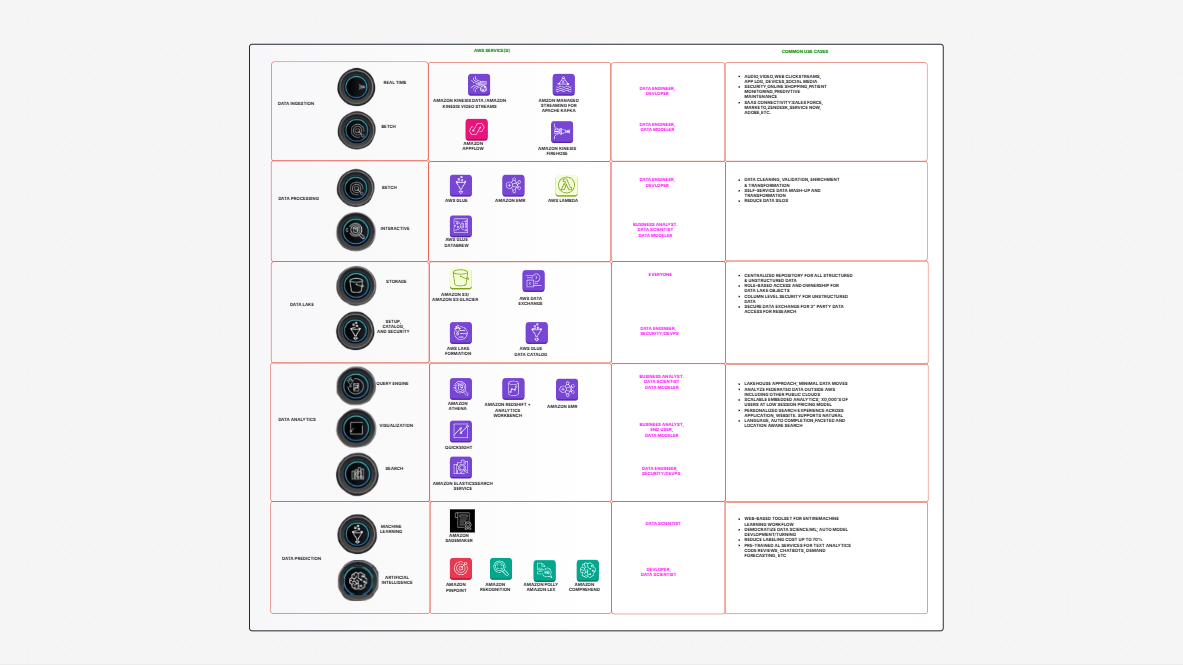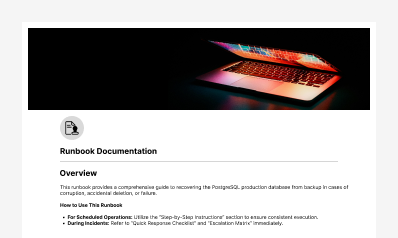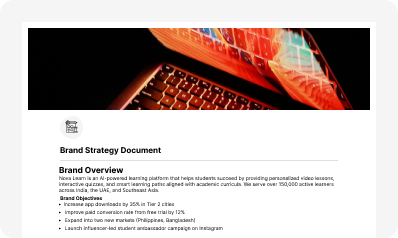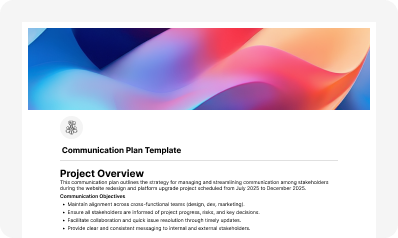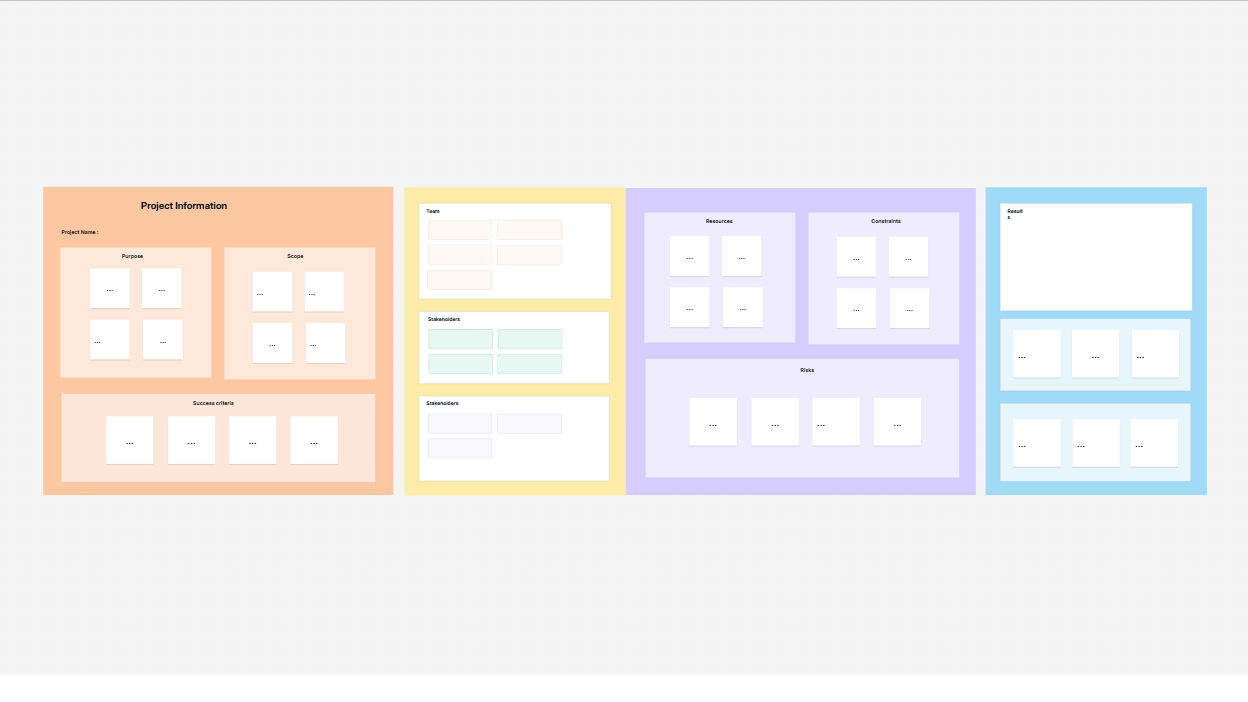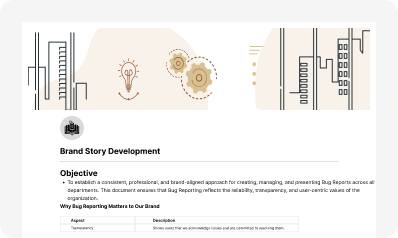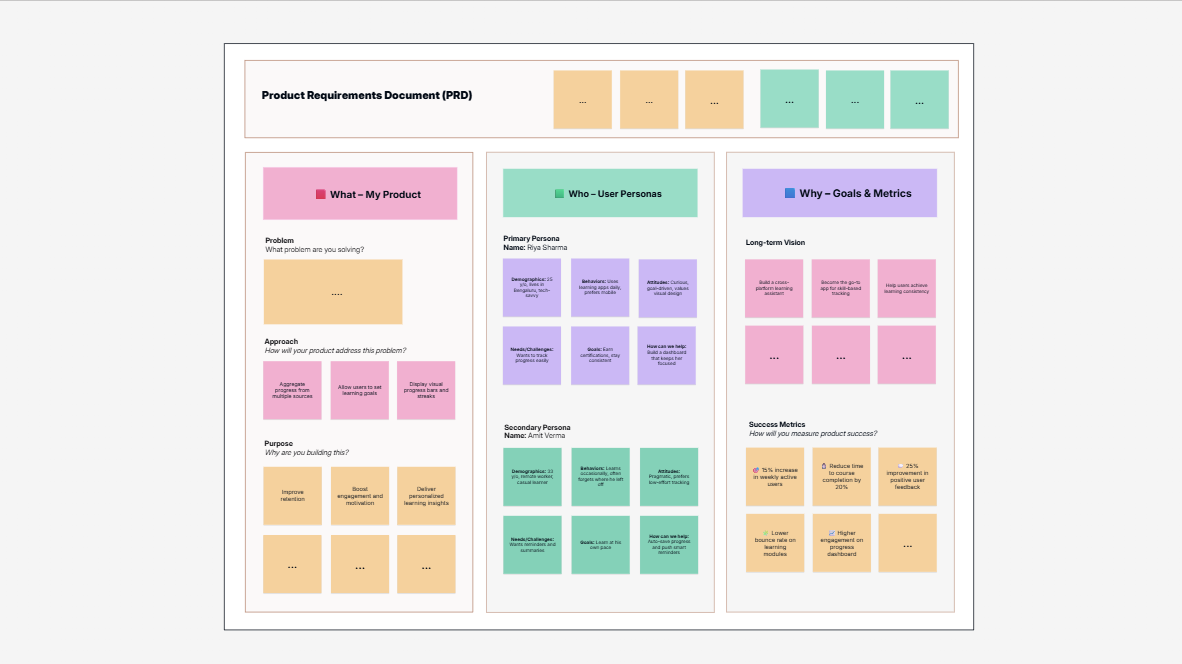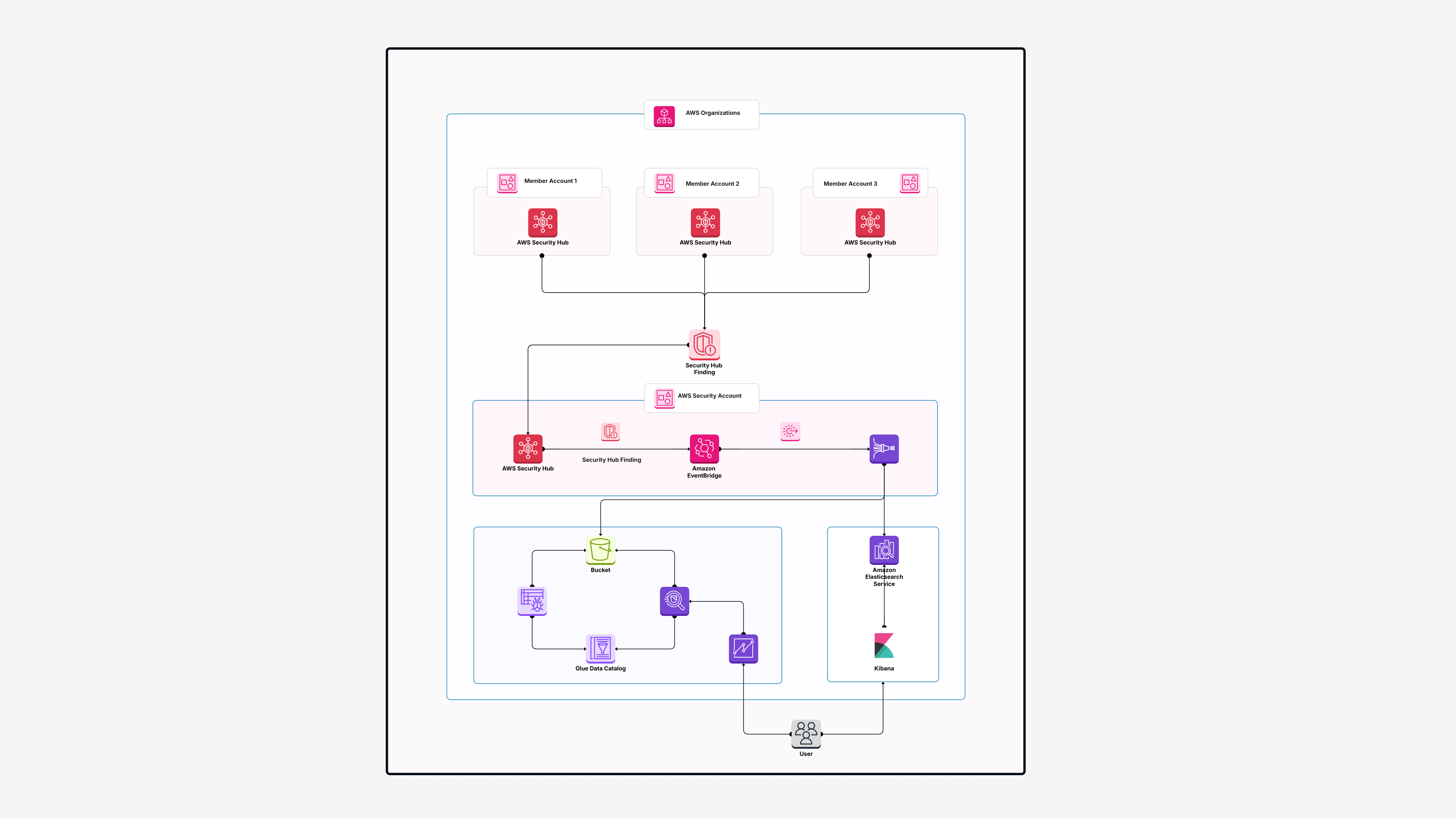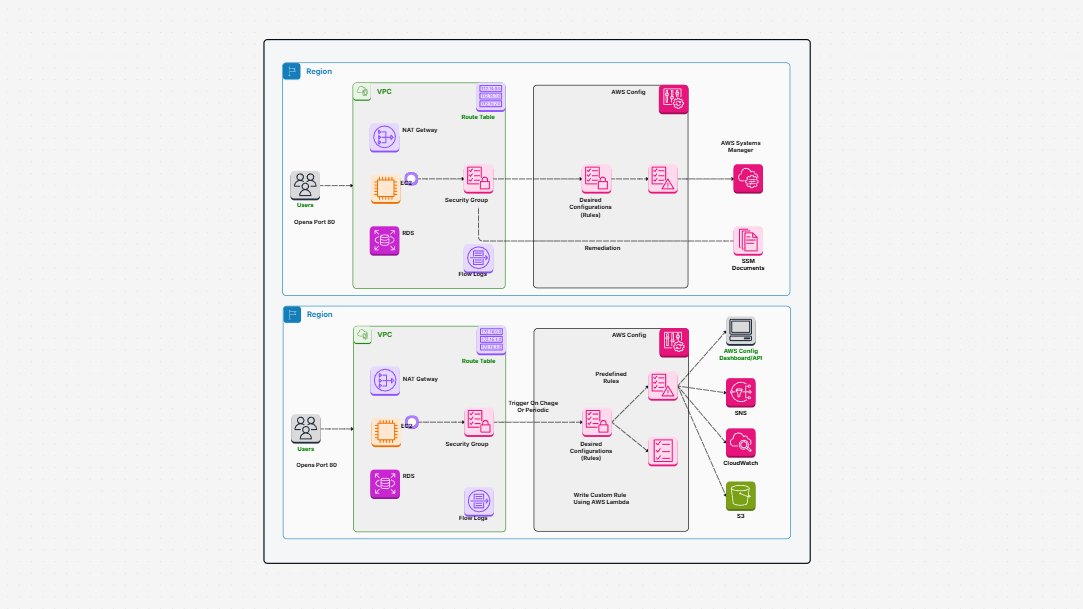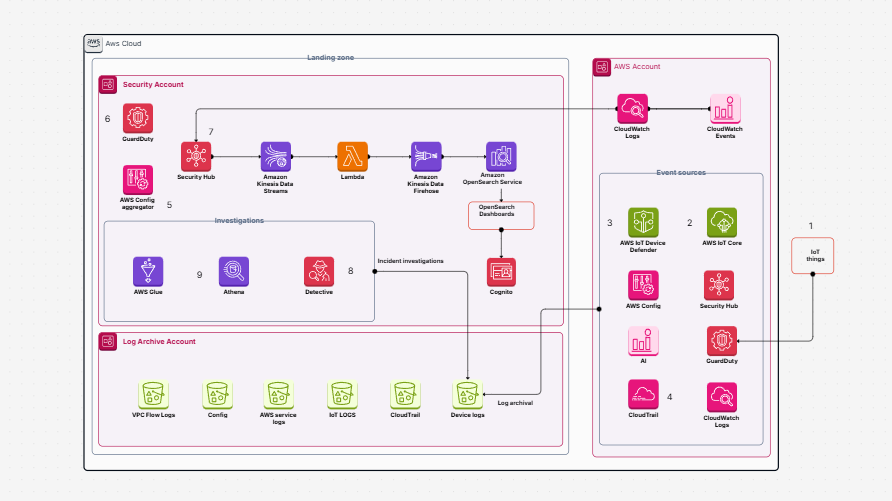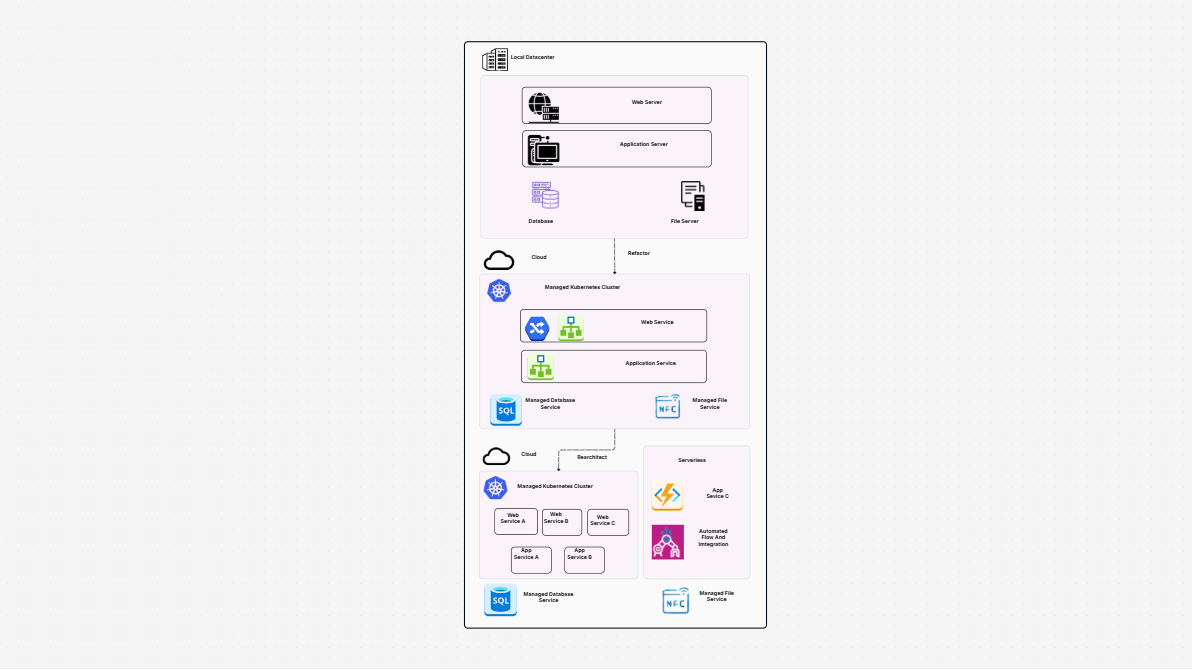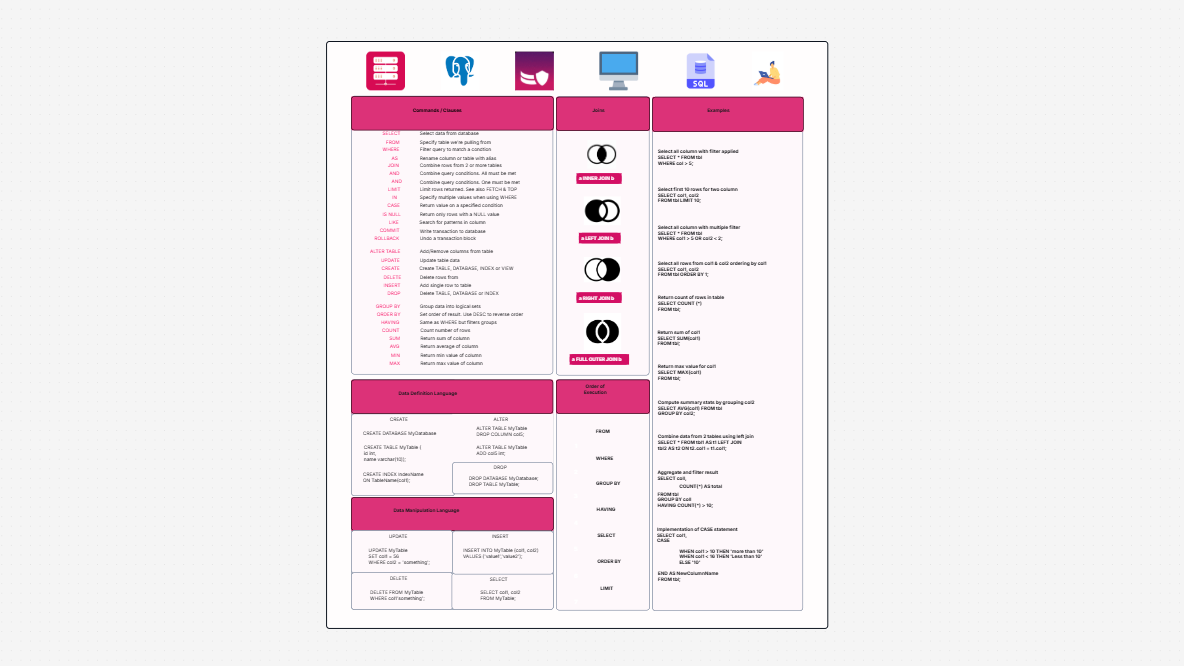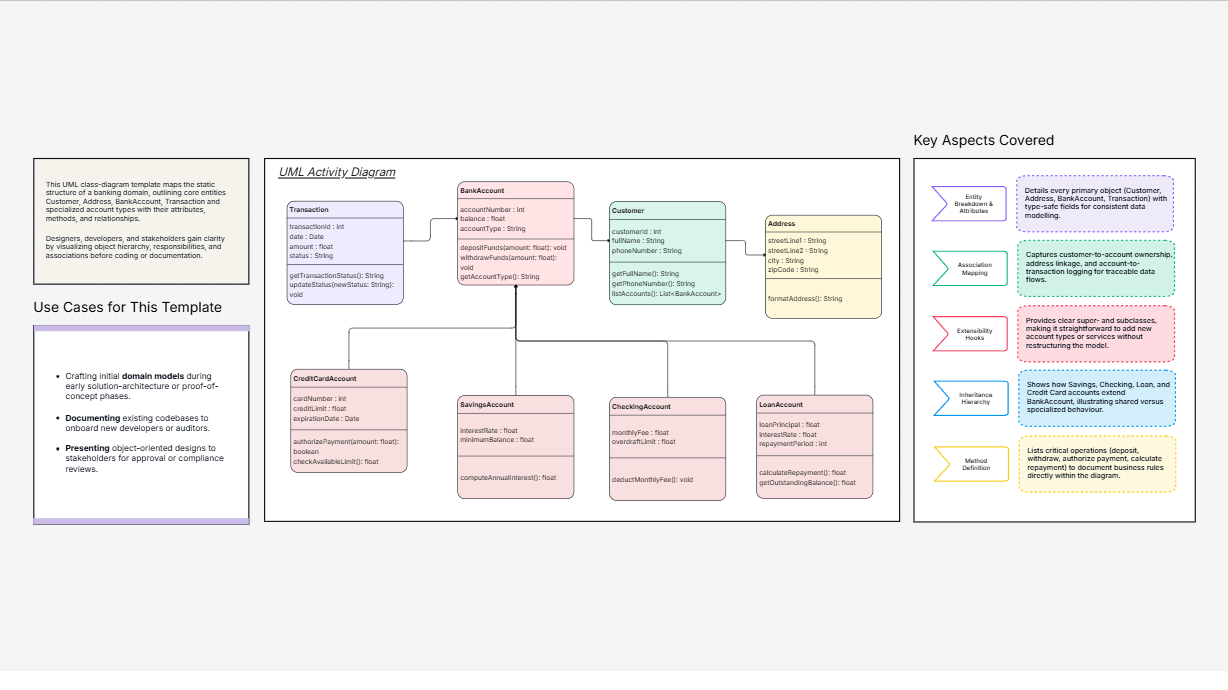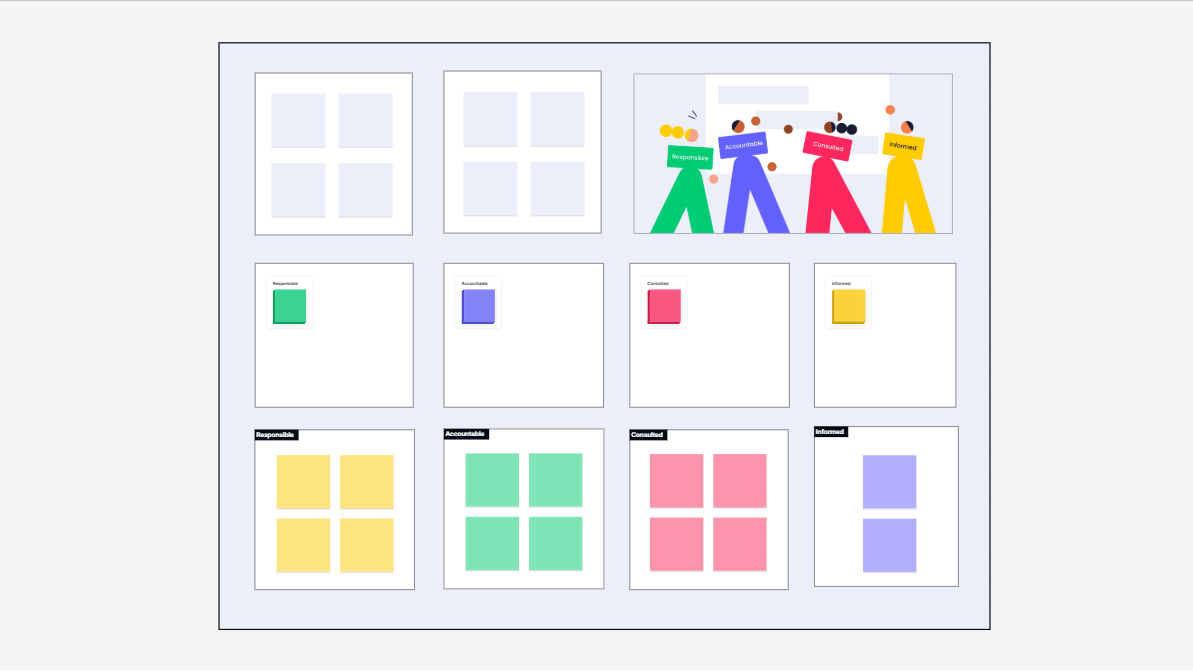WorkHub

What is the GCP Enterprise Foundation Architecture Diagram?
This template is like an outline for a secure, scalable, and well-managed cloud home for your business in GCP. It helps you visualize how all the core parts of your cloud setup fit together. It’s essential for building a strong GCP startup architecture.
It shows you:
-
Shared Networks (Shared VPCs): How different teams or projects can use the same secure network, making things simpler and safer.
-
Identity & Access (IAM Policies & Cloud Identity): How you control who can do what, ensuring only the right people have access to your cloud resources.
-
Monitoring & Logging: How to keep an eye on everything happening in your cloud with centralized logging and monitoring tools.
-
Private Connections: How to securely link your existing office networks to GCP using things like Cloud Interconnect.
-
Security Features: How to use tools like Cloud Firewall, Private Service Connect, Security Command Center, and key management to protect your data and applications.
Why Use the GCP Enterprise Foundation Architecture Diagram?
Using this template helps you a lot when setting up your cloud:
-
Build a Strong Foundation: It gives you a clear plan for your GCP enterprise foundation architecture, making sure your cloud is built on best practices from the start.
-
Get Your GCP Landing Zone Right: It’s crucial for quickly and securely setting up your initial cloud environment that's ready for workloads.
-
Streamline Your Enterprise Cloud Setup: It helps manage resources across different teams and departments efficiently, avoiding chaos.
-
Improve Security: By showing you where to put security policies, firewalls, and key management, it helps you keep your cloud safe.
-
Boost Scalability: Design your architecture to grow easily as your company's needs expand.
-
Better Governance: Enforce consistent rules and policies across your entire GCP environment.
-
Simplify Complexities: Makes understanding and managing a large cloud setup much easier.
Who Can Use the GCP Enterprise Foundation Architecture Diagram?
This template is super helpful for:
-
Cloud Architects: To design the overall GCP enterprise foundation architecture.
-
IT Managers & Directors: To oversee the enterprise cloud setup and ensure proper governance.
-
DevOps Teams: To understand how automation and infrastructure as code fit into the big picture.
-
Security Teams: To plan and implement security policies for the gcp landing zone.
-
Anyone starting a large GCP project: To ensure a solid gcp startup architecture.
How to Open This Template in Cloudairy?
-
Log in to Cloudairy.
-
Open the "Templates" section.
-
Search for "GCP Enterprise Foundation Architecture Diagram."
-
Click to open the template.
-
Check out the ready-made cloud structures.
-
Change parts of it to fit what your organization needs.
How to Use it in the Cloudairy?
-
Open the "GCP Enterprise Foundation Architecture Diagram" template in Cloudairy.
-
Tweak things like who has access (IAM roles), logging settings, and network names (DNS).
-
Adjust shared network settings for different regions if needed.
-
Work with your security team to put policies in place.
-
See how different cloud services connect and rely on each other.
-
Export your final architecture diagram for putting it into action.
Template Components
-
Cloud Identity: Manages who can log in and what they can do.
-
IAM Policies: Controls exact permissions for cloud resources.
-
Cloud Logging: Gathers all the activity logs in one place for monitoring.
-
Cloud Monitoring: Keeps track of how your cloud systems are performing.
-
Shared VPC: Lets multiple projects use the same network, key for gcp landing zone.
-
Cloud Router: Helps direct network traffic efficiently.
-
Cloud Interconnect: Connects your company's on-premises network directly to GCP.
-
Cloud DNS: Manages website addresses and how they translate to IP addresses.
-
Cloud Firewall: Protects your network from unwanted access.
-
Private Service Connect: Secures communication with Google APIs and other services.
-
Security Command Center: A central hub for monitoring your cloud security.
-
Cloud Key Management: Manages encryption keys for your data.
-
Secret Manager: Stores sensitive information like passwords securely.
-
External Identity Provider: Connects with outside systems to manage user logins.
-
Git Source Repository: Where you store code for managing your cloud setup (infrastructure as code).
Summary
The GCP Enterprise Foundation Architecture Diagram gives you a clear plan for building a strong cloud base for your company. It helps make your enterprise cloud setup scalable, secure, and efficient by using key tools like IAM, shared VPCs, monitoring, and private networks. This template is perfect for optimizing your cloud governance and ensuring a solid gcp startup architecture and gcp landing zone.
FAQs
Q1: What's the main idea behind the GCP Enterprise Foundation Architecture template?
A1: It's all about providing a strong, secure starting blueprint for your GCP enterprise foundation architecture in Google Cloud.
Q2: How does this template help with security?
A2: It shows you how to use IAM Policies, Cloud Firewall, and Security Command Center to keep your cloud environment safe, which is vital for any enterprise cloud setup.
Q3: What's a "GCP landing zone" and how does this template relate?
A3: A GCP landing zone is a well-architected, secure, and scalable cloud environment ready for your workloads. This template directly outlines how to build one.
Q4: Does this template cover networking between on-premises and GCP?
A4: Yes, it includes Cloud Interconnect as a component for connecting your physical data centers to GCP.
Q5: What are Shared VPCs and why are they important in this architecture?
A5: Shared VPCs allow different projects to share a common network, which simplifies network management and enhances security, a key part of the GCP startup architecture.
Q6: Who should use this template?
A6: Cloud architects, IT managers, DevOps teams, and anyone planning a significant enterprise cloud setup in GCP.
Q7: Does it include tools for monitoring and logging?
A7: Absolutely, Cloud Logging and Cloud Monitoring are core components for keeping tabs on your cloud's health.
Q8: Can I customize this template for my company?
A8: Yes, you can open it in Cloudairy and modify components to fit your specific organizational needs for your GCP enterprise foundation architecture.
Q9: What is the benefit of a "GCP startup architecture" like this?
A9: It ensures you start with a well-organized, secure, and scalable environment, preventing problems down the road and speeding up adoption.
Q10: Does it include managing sensitive data?
A10: Yes, components like Cloud Key Management and Secret Manager are there for securely handling encryption keys and sensitive information.
Related GCP Architecture Diagram Templates
Find templates tailored to your specific needs. Whether you’re designing diagrams, planning projects, or brainstorming ideas, explore related templates to streamline your workflow and inspire creativity
Design, collaborate, innovate with Cloudairy
Unlock AI-driven design and teamwork. Start your free trial today










Design, collaborate, innovate with Cloudairy
Unlock AI-driven design and teamwork. Start your free trial today












